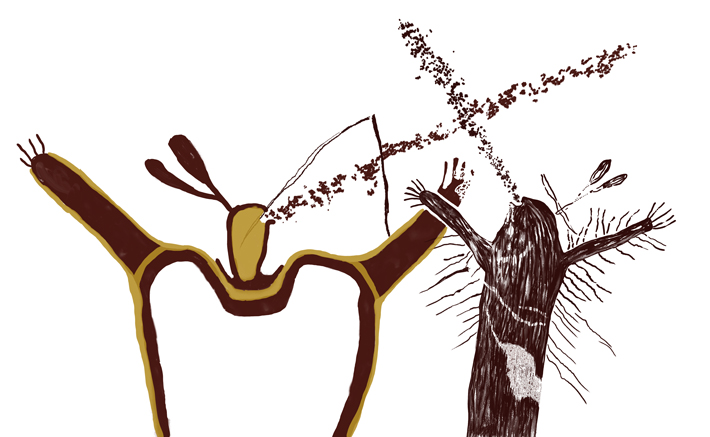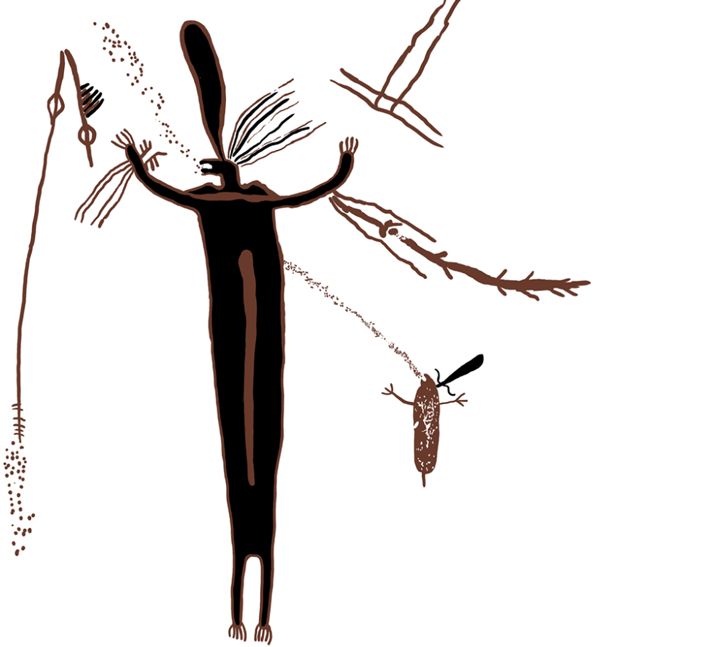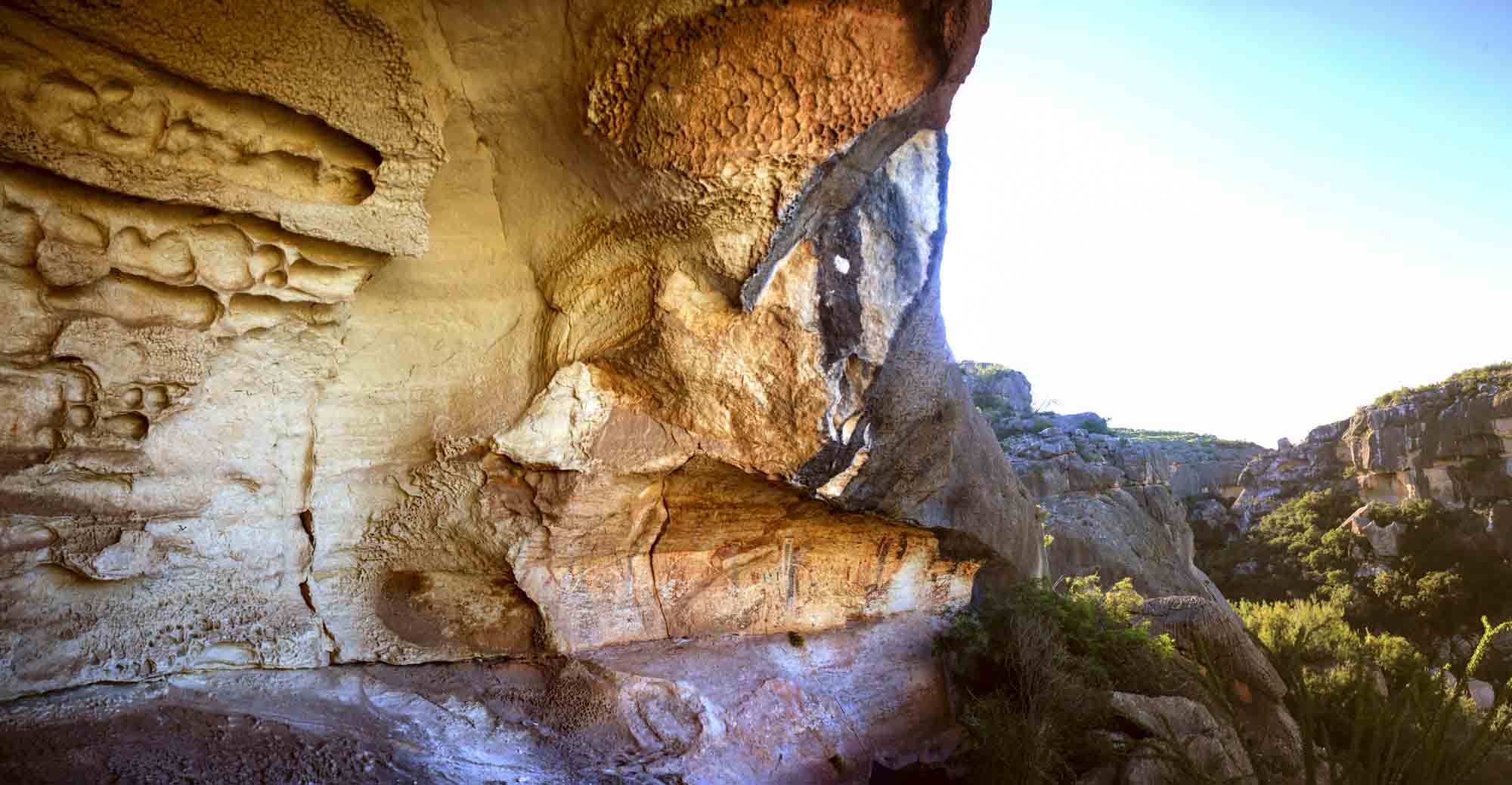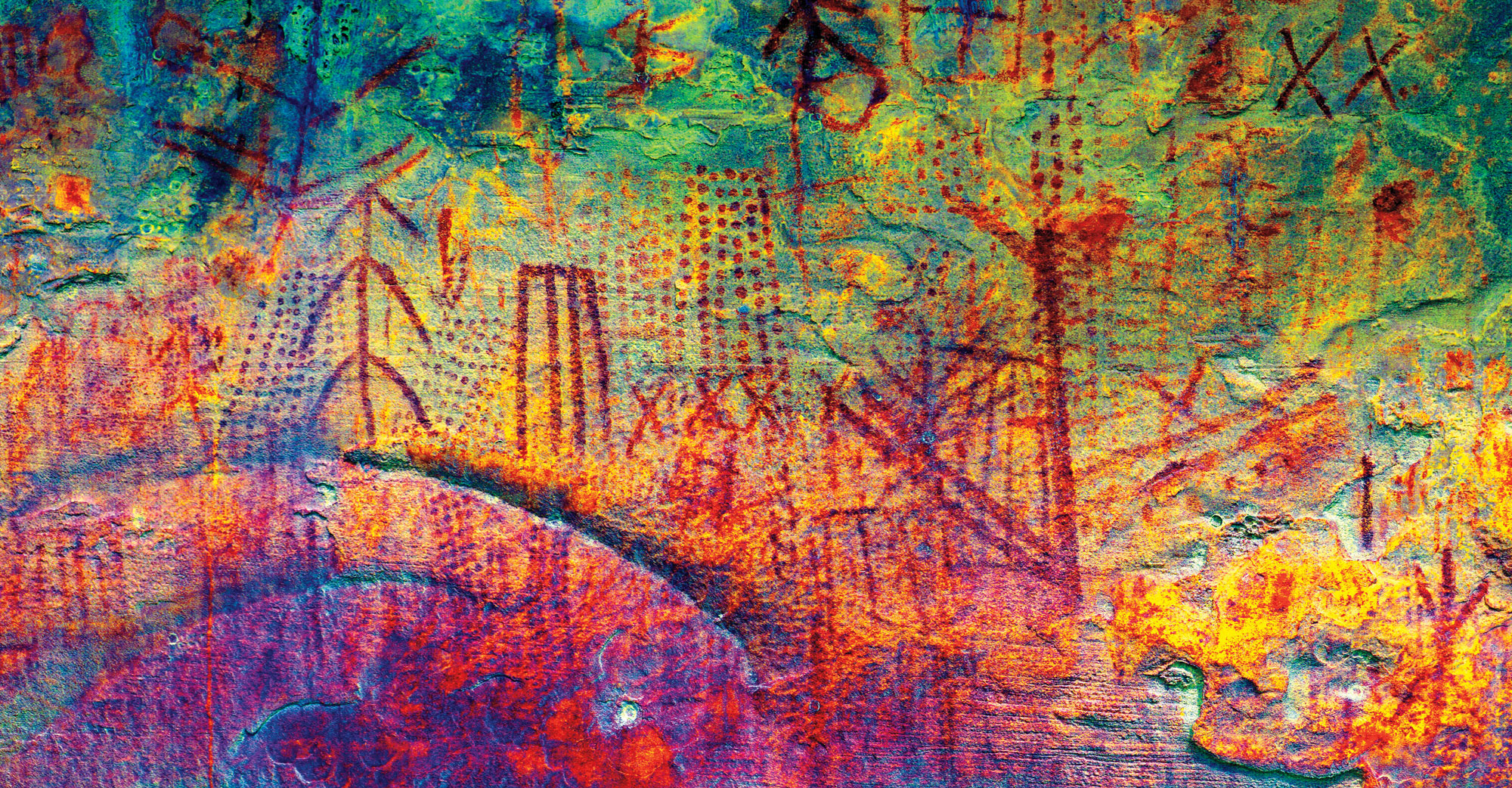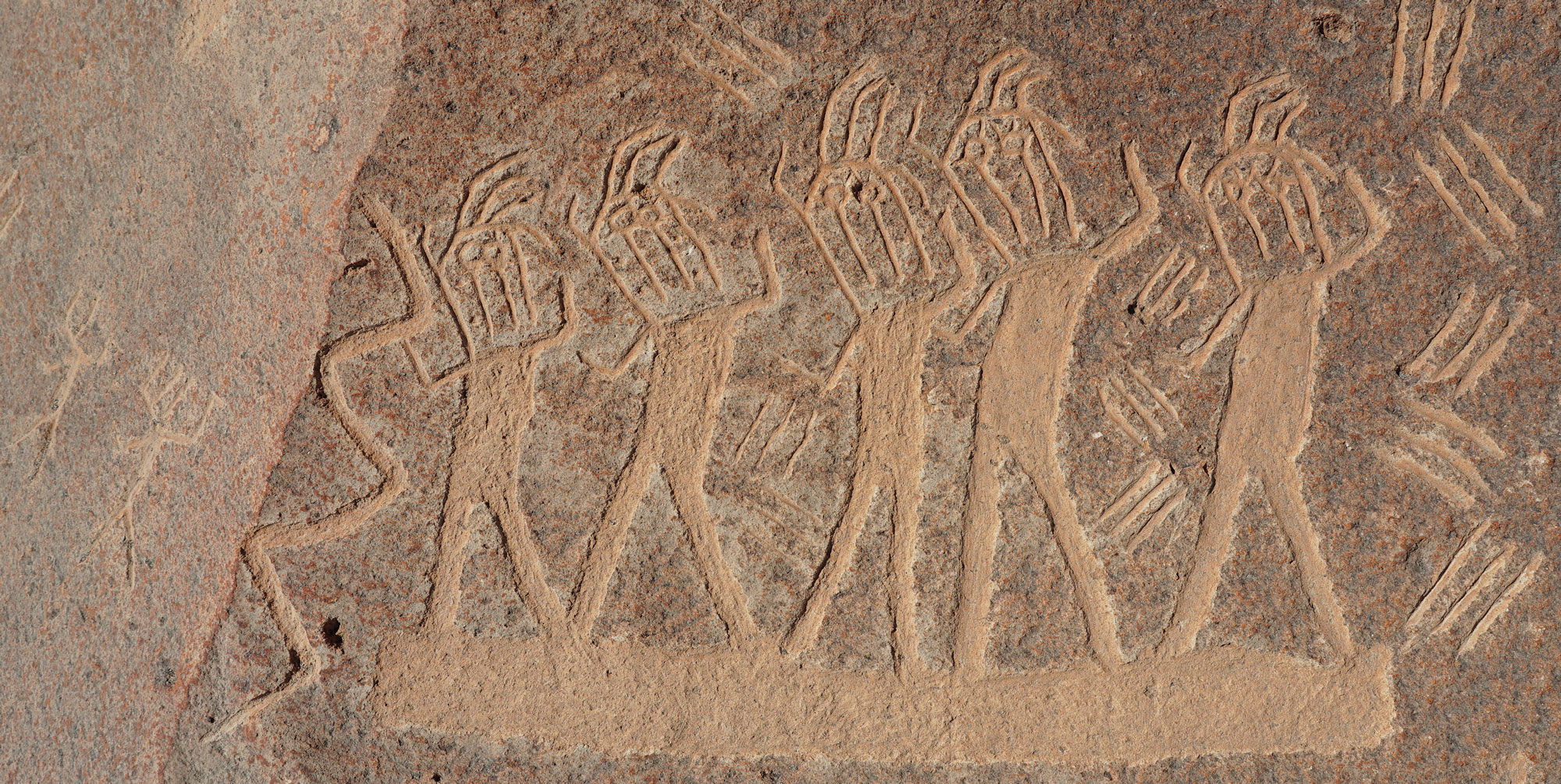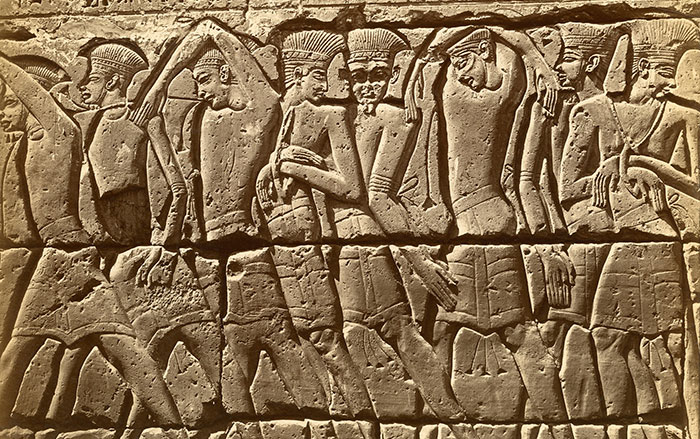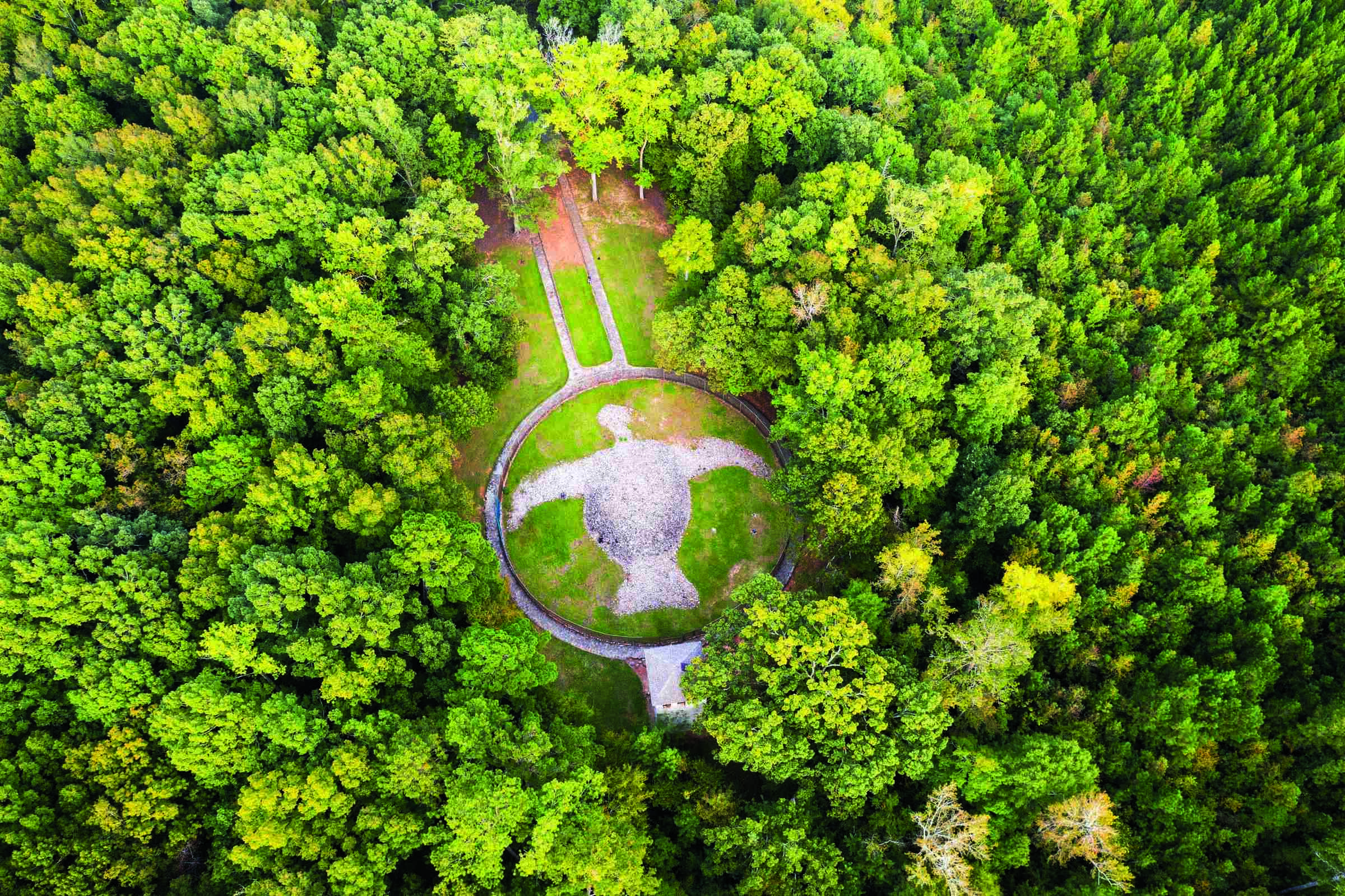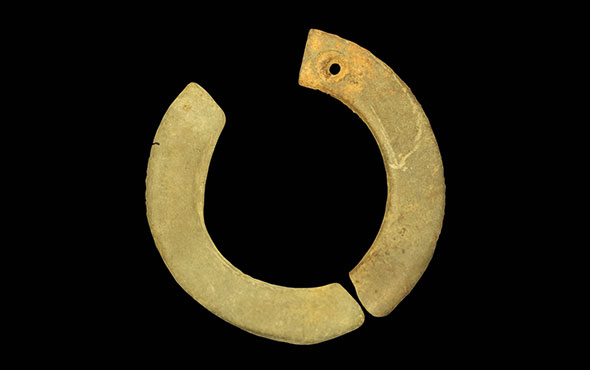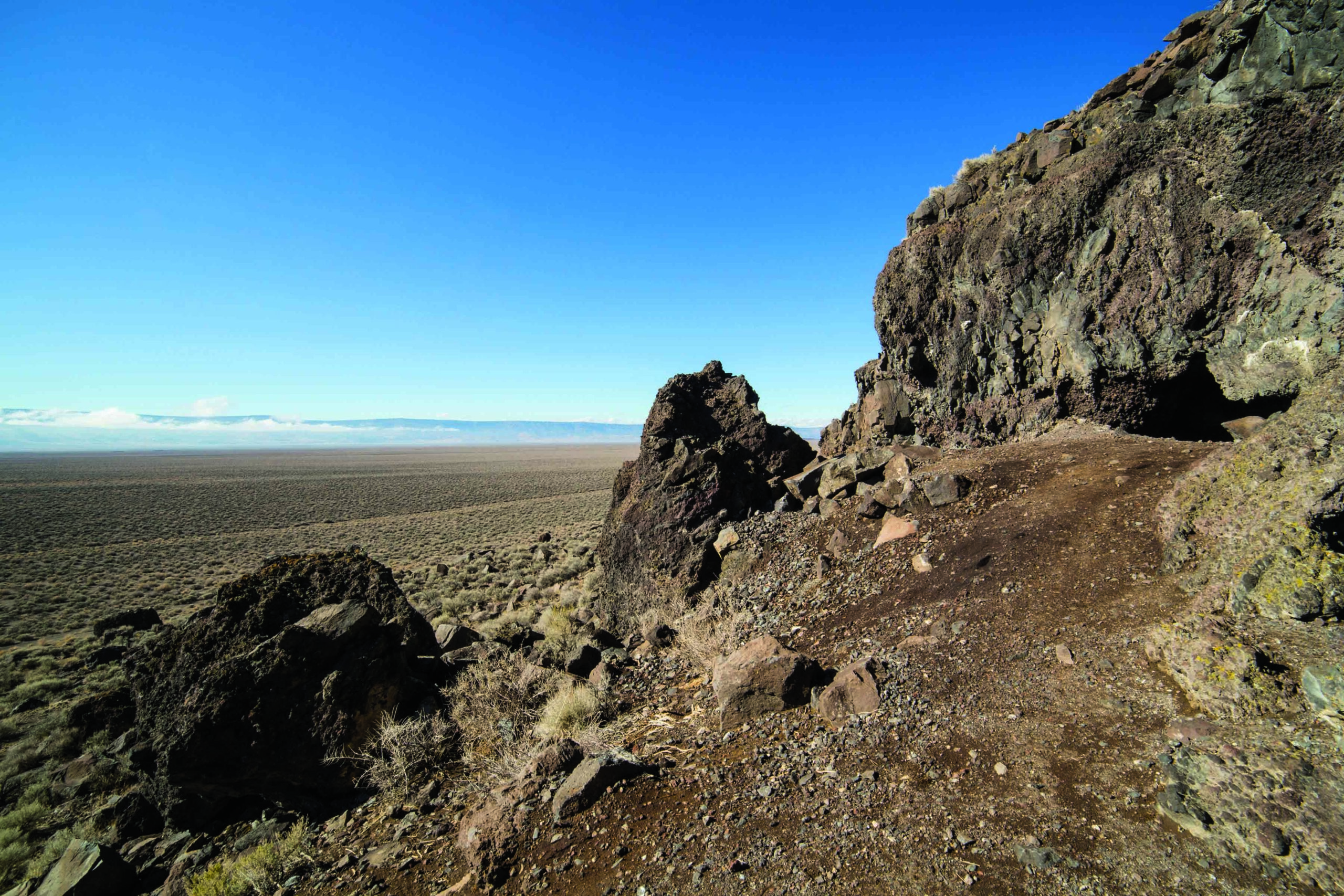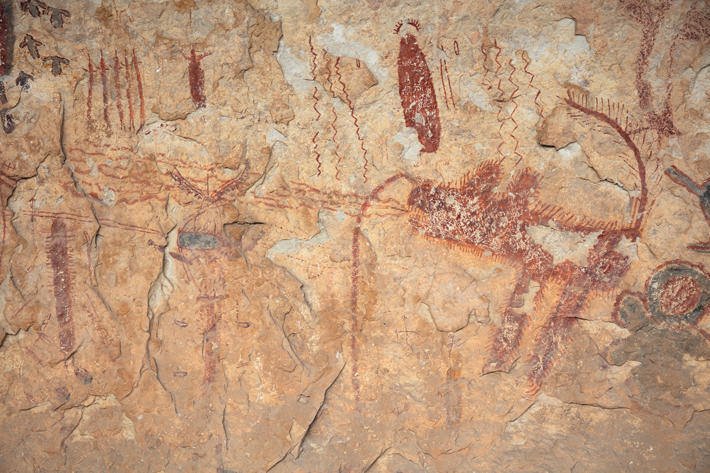
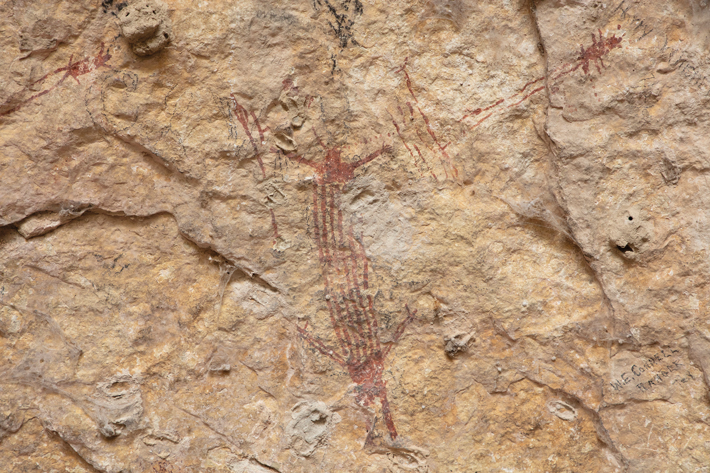
Artists have sought to depict sound in their work since at least the European Upper Paleolithic, some 36,000 years ago. A row of red dots emerging from the mouth of a lion in France’s Chauvet Cave, for instance, is one of the earliest known examples of an artist rendering an animal making a sound. Recently, Texas State University archaeologist Carolyn Boyd surveyed rock art made by hunter-gatherers living from around 2500 B.C. to A.D. 500 in the canyonlands of southwest Texas and the Mexican state of Coahuila to explore how these people may have depicted human and animal speech. She found that the artists, who worked in a tradition known as Pecos River Style rock art, used dots and lines made almost exclusively with red pigment to create what she calls “speech-breath” emanating from the mouths of close to 100 human and animal figures. Some Pecos River Style figures stand face-to-face exchanging emphatic red dots, as if they are debating or perhaps singing. Still other figures have delicate red lines coming from their mouths. “It’s almost as if they are whispering,” says Boyd. One half-human, half-feline figure bellows forth a series of energetic zigzag lines. “That seems to be a thunderous roar,” says Boyd. “For their creators, these weren’t just silent images, they were full of sound and life.” To see more images featuring Pecos River Style rock art speech-breath, click here.
Slideshow: Texas Rock Art Speaks
The stylized red dots identified by Texas State University archaeologist Carolyn Boyd as representing speech-breath in Pecos River Style rock art were rendered in a number of different forms. Some dots issue from the mouths of figures as thick streams of speech-breath, others as large, distinct circles. Some figures seem to direct speech-breath at other human-like forms, perhaps depicting efforts to energize or support them. Others seem to be talking with each other or singing together. The exact meaning of each instance of speech-breath may never be understood, but the photographs and drawings of Pecos River Style figures below leave no doubt that the artists creating them imagined their subjects speaking, singing, debating, and perhaps even bellowing—breaking the stillness of the canyon lands of what is now southwest Texas. All photos are courtesy Shumla Archaeological Research & Education Center and all drawings are courtesy Carolyn Boyd. To explore Boyd’s work in more depth, go to “Reading the White Shaman Mural.” Her article describing speech-breath in Pecos River Style rock art is available in its entirety at Latin American Antiquity.


